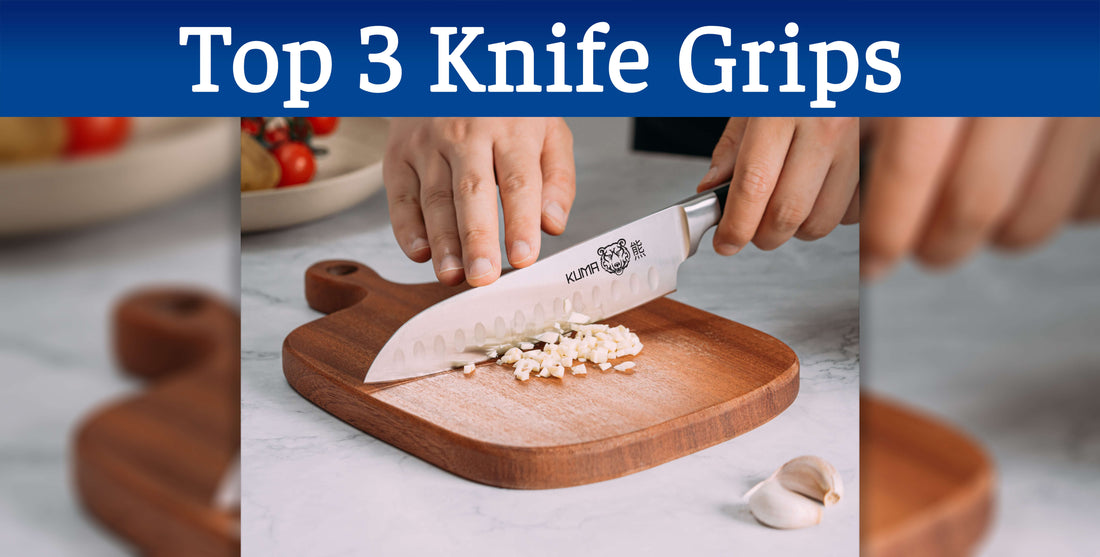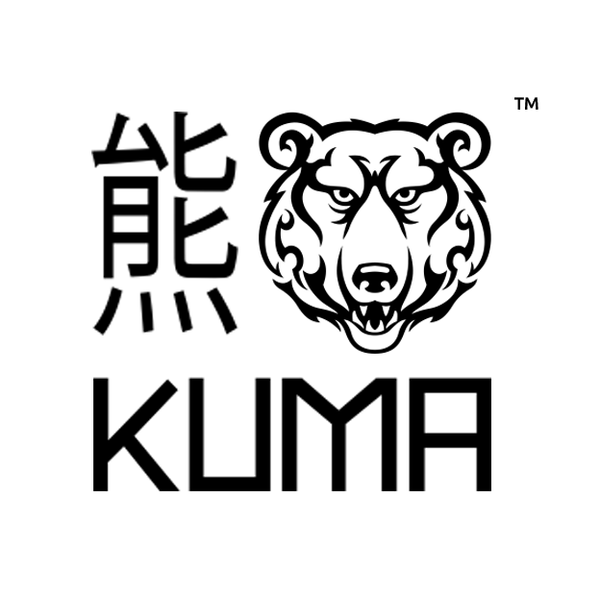
Top 3 Kitchen Knife Techniques (Safe, Secure, and Used By the Pros)
Share
Top 3 Kitchen Knife Techniques NEW
Today let’s get to the pointy end of knife safety with this guide of general good knife technique. We want to cover three main kitchen knife techniques that will make your time in the kitchen much more enjoyable. More specifically, we are talking about 3 great knife grips; The Bridge, The Claw, and the Cross Chop. Let’s dig in, shall we?
1. The Bridge Grip
The Bridge Grip is perfect when you want to cut ingredients into smaller, more manageable pieces. So how do you do it? With your non-cutting hand, simply form a bridge over the ingredient. Ensure the arch is wide and high enough for the knife to fit within it. Hold the ingredient securely with your thumb on one side and middle and index fingers on the other side.
Now pick up your KUMA knife with your cutting hand and carefully guide the knife through the arch of the bridge.Slice trough the center of the ingredient by pressing down and sliding the knife back towards you out of the bridge, giving you two halves. Take one half at a time and place it flat-side down. One half at a time, you can now repeat the bridge and cut your ingredient into quarters. This method is great for cutting ingredients into halves, quarters, 8th etc. Simply rinse and repeat until you’ve got the number of pieces you need.It is important to never rush and always be careful! Take your time and always check your fingers are out of harm’s way.


2. The Claw Grip
One of the most famous professional knife grips is the claw technique. This is used to slice ingredients into strips as well as fine dicing and chopping.
Flat-side down, place the ingredient on your board. With your non-cutting hand, partly curl your fingers together to form a claw. Make sure you tuck away your thumb and finger tips.
Place your claw on top of the ingredient and pick up the knife with your cutting hand. With the blade is facing down the wall of your fingers now face the knife. Keep the knife tip on the board and slowly slice through the ingredient with the side of the blade resting against the wall of your fingers. Carefully slide the knife back towards you or cut in a rocking motion.
To make the next cut, move your fingers further back on the ingredient while keeping your fingers together and keeping a firm grip on the top. Always make sure your finger tips and your thumb are tucked out of harm’s way, and always keep close watch on where your knife is going.


3. Cross Chop Grip
The cross-chop knife technique is a great method to finely chop herbs or vegetables.
Start by cutting your herbs or vegetable into rough pieces. For this you can deploy one of the techniques we’ve covered above.
Next, hold your knife firmly in one hand and place its tip on the board at roughly a 20 degree angle.
Place the fingers of your non-cutting hand firmly on the spine of the blade near the tip. With the knife tip still on the board you now raise and lower the handle of the knife, essentially chopping everything beneath the blade. As you grow more comfortable using this knife technique, you can begin increasing the speed of each chop. Always keep your fingers on top of the blade’s spine with this technique, and always keep close watch on where your blade is going.
NOTE: some knives have rough spines, making it uncomfortable to rest your fingers on top of it. All KUMA knives are designed with many various cutting techniques in mind - this one included - ensuring you always get maximum comfort when doing your knife prep work.

